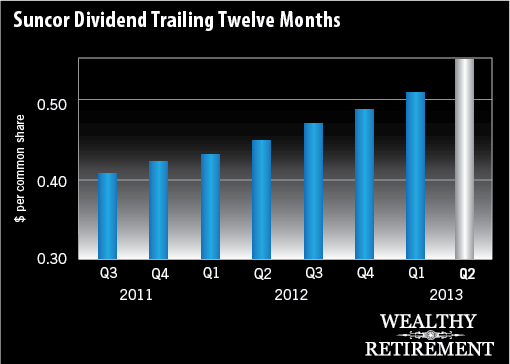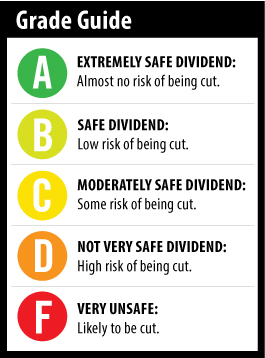 Investors in Canadian oil sands developer Suncor Energy (NYSE: SU) cheered in August when it was revealed that Warren Buffett invested $500 million in the company, acquiring roughly 1% of the stock.
Investors in Canadian oil sands developer Suncor Energy (NYSE: SU) cheered in August when it was revealed that Warren Buffett invested $500 million in the company, acquiring roughly 1% of the stock.
Having Warren’s stamp of approval is always a confidence booster.
However, that’s apparently not enough for Wealthy Retirement reader Bob, who asked me to take a look at Suncor’s dividend safety.
[ad#Google Adsense 336×280-IA]As you can imagine, it’s getting tiresome being constantly called in to validate Buffett’s decision-making process, but I’m flattered nonetheless.
Although Buffett’s own company, Berkshire Hathaway (NYSE: BRK-A), doesn’t pay dividends, he likes them.
A lot.
He is known for investing in dividend-paying stocks and holding them for years.
He has famously held Coca-Cola (NYSE: KO) since 1988.
One of his newer holdings, Suncor, yields 2.1% but has been raising the dividend every year since 2009 at a hefty average of 20% per year.
 In the first half of 2013, Suncor generated $1.77 billion in free cash flow. During that period it paid out $499 million in dividends for a paltry 28% payout ratio.
In the first half of 2013, Suncor generated $1.77 billion in free cash flow. During that period it paid out $499 million in dividends for a paltry 28% payout ratio.
If you’re new to the concept of a payout ratio, it’s the percentage of a company’s earnings or cash flow that is paid out in dividends. Typically, I want to see a payout ratio of 75% or lower. That way, the company has plenty of room to raise the dividend – or at least not cut it if times get tough.
For this year, Wall Street predicts Suncor’s free cash flow will be $2.81 billion. That is more than enough to cover the nearly $1 billion in dividends the company will likely pay.
Next year, free cash flow is expected to rise to $2.91 billion. Since the company has been raising the dividend annually and it has plenty of cash to continue, I assume in 2014 it can pay out 20% more in dividends than it did in 2013.
(Note: This 20% figure may end up being lower because the company is buying back shares. So if Suncor raised the dividend by 20%, but repurchased shares, the amount paid per share would still rise by 20%, but the total amount paid to shareholders would be less than 20% growth because there would be fewer shares outstanding.)
If the company pays out $1.2 billion in dividends against $2.91 billion in free cash flow next year, that’s a payout ratio of 41%.
Let’s keep the scenario going and assume another 20% bump in dividend payments. In 2015, Suncor’s cash flow is projected to fall to $2.38 billion, before rising above $3 billion in 2016 and 2017.
Even at the depressed $2.38 billion, the dividend payment of $1.44 billion is still safe at 61% of free cash flow.
Obviously, the company can’t keep raising the dividend payout by 20% forever without 20% growth in free cash flow. But it can for the next several years. And would anyone complain if the dividend went up only 12% or 15% per year?
Of course, there are variables outside of Suncor’s control. Oil prices could collapse, which could negatively impact revenue and cash flow.
But if Suncor experiences the regular ups and downs of its business over the next several years, one thing investors shouldn’t have to worry about is its dividend. Not only is it stable, I’d be surprised if it doesn’t increase at a meaningful growth rate for years to come.
I’m sure Warren Buffett was well aware of the dividend stability and likelihood for growth before he made his investment.
But now he can sleep easy knowing I’ve confirmed it.
Dividend Safety Rating: A
 — Marc Lichtenfeld
— Marc Lichtenfeld
[ad#wyatt-income]
Source: Wealthy Retirement
